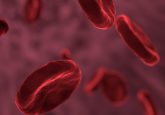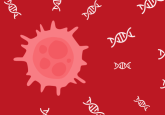New blood-based method for detecting rare diseases

A single, untargeted proteomics test for rare genetic diseases has been developed.
A research team from the University of Melbourne (Australia) and Murdoch Children’s Research Institute (Victoria, Australia) has developed a blood test for rapidly diagnosing rare genetic diseases in infants and children. This unique test sequences proteins, rather than the genes themselves, offering insights into how changes in gene sequence can affect a protein’s function and lead to disease.
Rare diseases – those which affect fewer than 1 in 2000 people – may be uncommon individually; however, collectively, there are more than 7000 rare diseases, affecting 300 million people worldwide. While genome sequencing has allowed advancements in rare disease diagnostics to be made, only half of people suspected of having a rare disease receive a diagnosis following genomic testing.
As such, a large proportion of patients with a suspected rare disease remain undiagnosed and require additional functional tests to confirm if a gene mutation is the cause of their disease. This can be a slow and invasive process, with most tests only targeting specific rare diseases.
 Protein interaction underlying healthy brain development revealed
Protein interaction underlying healthy brain development revealed
Researchers capture first-of-its-kind video of dynein–Lis1 protein interaction, supporting future drug development for neurological disorders.
Now, the research team has developed a rapid, untargeted mass spectrometry-based proteomics test that can analyze thousands of proteins at once from a 1 ml sample of blood. “Our new test can identify more than 8,000 proteins in peripheral blood mononuclear cells (PBMCs) covering more than 50% of known Mendelian and mitochondrial disease genes, as well as enable us to discover new disease genes,” commented corresponding author Daniella Hock (University of Melbourne).
This new test has the potential to be able to diagnose thousands of rare genetic diseases, replacing other targeted functional tests. Additionally, this test could allow new rare genetic diseases to be detected by providing insights into the genetic changes that may be the cause of the disease.
To assess the performance of their blood-based method against other tests for rare disease, the team collaborated with the Melbourne School of Population and Global Health (Australia) in a recent study. This study benchmarked their test against a clinically accredited enzyme test for rare mitochondrial diseases, finding that their new test was more effective in confirming a diagnosis due to its sensitivity and accuracy; it also provided results more quickly.
Next, the team is investigating the utility of their diagnostic test in a wide range of genetic disorders, eventually hoping that their test will become a standard diagnostic procedure for rare genetic diseases.




